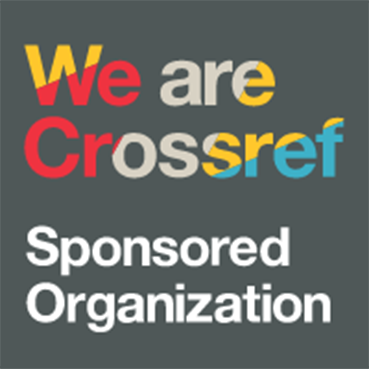Pengembangan Cerita Rakyat Aceh Berbasis Literasi di MTsN 1 Lhokseumawe
DOI:
https://doi.org/10.47766/ibrah.v1i1.565Keywords:
Folktales of Aceh, Teaching MaterialsAbstract
Learning success is influenced by many factors. Generally, everything relies on the teacher's competency factor. It is natural that teacher professionalism is now highly demanded in order to improve the quality of education in Indonesia. One of the teacher competencies required in his profession is to prepare to learn well and mature. most teachers enter the class without careful preparation. Even if there is a Learning Implementation Plan (RPP), it is not homemade but photocopying from another teacher/person or from the internet. The main capital of the teacher enters the class using textbooks or worksheets written by others. This requires training for teachers in the preparation of teaching materials. The purpose of this study was to develop literacy-based folklore teaching materials (reviewed based on listening, speaking, reading, and writing skills) for class VII students of MTsN 1 in Lhokseumawe City. The results of the study stated that the validity of the developed learning devices included in the valid category with an average value of RPP validity of 4.03, teaching material 4.12, LKS of 4.42, and items was in the valid category. Learning tools developed through literacy folklore materials based on Aceh have met the effective criteria. Effective criteria viewed from: (1) student learning completeness classically has reached 87% in trial II; (2) achievement of learning objectives of at least 75%; (3) achievement of learning time is at least the same as ordinary learning. Increasing student literacy using Aceh folklore teaching materials on the material is the average student achievement in the first trial of 69 increased to 87 in the second trial, on average each student indicator increased from the trial I to trial II. Students have met the completeness criteria in a classical manner. This is due to the material and problems that exist in teaching materials and worksheets developed according to the conditions of the student's learning environment and referring to literacy. By applying literacy, students will be actively involved in the process of completing Indonesian language material. Theoretically, the learning time used during learning using literacy has met the effectiveness criteria. By using teaching materials, students are first given questions in writing, so that from these problems students can think, observe, make guesses, explain, and analyze to knowledge with the guidance of the teacher.
References
Arikunto, S. (2016). Prosedur Penelitian Suatu Pendekatan Praktik.
Bachri, S., Sugianto, L., Kriswinarso, T. B., & Lihu, I. (2021). Pengembangan Perangkat Pembelajaran Matematika Berbasis Masalah untuk Melatih Keterampilan Metakognitif Peserta Didik. ITQAN: Jurnal Ilmu-Ilmu Kependidikan, 13(1), 103–116. https://doi.org/10.47766/itqan.v13i1.132.
Danandjaja, J. (1991). Folklor indonesia dan jepang: suatu studi perbandingan.
Hernawan, A. H., Permasih, H., & Dewi, L. (2012). Pengembangan bahan ajar. Direktorat UPI, Bandung, 4(11), 1–13.
Huda, M., & Purwahida, R. (2010). Pelatihan Penyusunan Bahan Ajar Bahasa Indonesia bagi Guru SMP/MTs di Surakarta. Publikasi Ilmiah. 13(1). http://hdl.handle.net/11617/2052.
Magdalena, I., Sundari, T., Nurkamilah, S., Nasrullah, N., & Amalia, D. A. (2020). Analisis bahan ajar. Nusantara, 2(2), 311–326. https://ejournal.stitpn.ac.id/index.php/nusantara/article/view/828.
Majid, A. (2007). Perencanaan Pembelajaran Mengembangkan Potensi Guru. Bandung: PT Remaja Rosdakarya. Sudijono, Anas.
Sianipar, T. (2007). Metodologi Penelitian Kuantitatif dan Kualitatif Konsep, Prinsip dan Aplikasi. Jakarta: Universitas Negeri Jakarta.
Sugiono. (2011). Metode Penelitian Kuantitatif kualitatif dan R&D. Alfabeta.
Sugiyono. (2015). Metode Penelitian Kuantitatif Kualitatif R & D. Bandung: Alfabeta.
Tunardi, T. (2018). Memaknai Peran Perpustakaan dan Pustakawan dalam Menumbuhkembangkan Budaya Literasi. Media Pustakawan, 25(3), 68-79. https://ejournal.perpusnas.go.id/mp/article/view/221.
Wijayanti, W., Zulaeha, I., & Rustono, R. (2015). Pengembangan Bahan Ajar Interaktif Kompetensi Memproduksi Teks Prosedur Kompleks yang Bermuatan Kesantunan bagi Peserta Didik Kelas X SMA/MA. Seloka: Jurnal Pendidikan Bahasa Dan Sastra Indonesia, 4(2), 94-101. https://journal.unnes.ac.id/sju/seloka/article/view/9866.
Downloads
Published
Issue
Section
License
Copyright (c) 2022 Novi Diana, Mutia Sari

This work is licensed under a Creative Commons Attribution-ShareAlike 4.0 International License.










